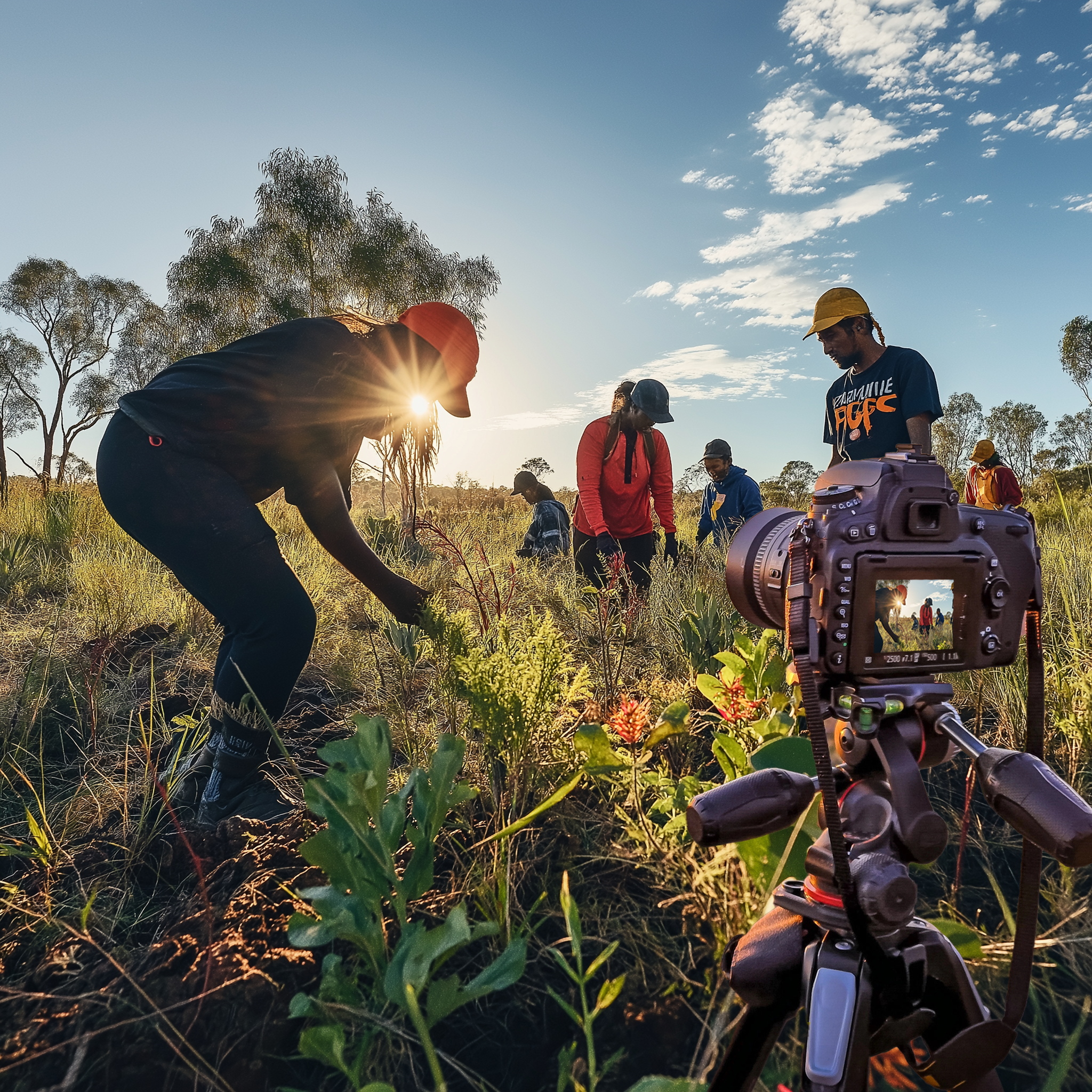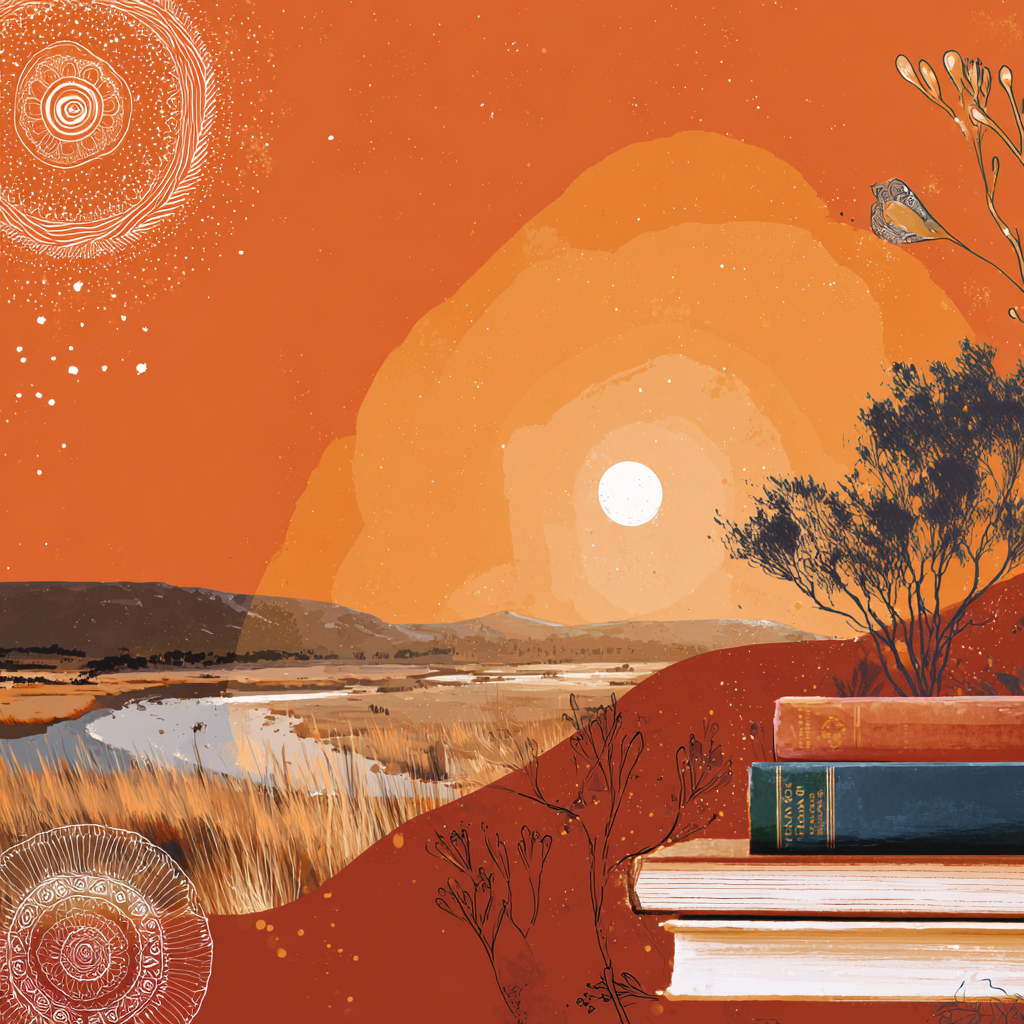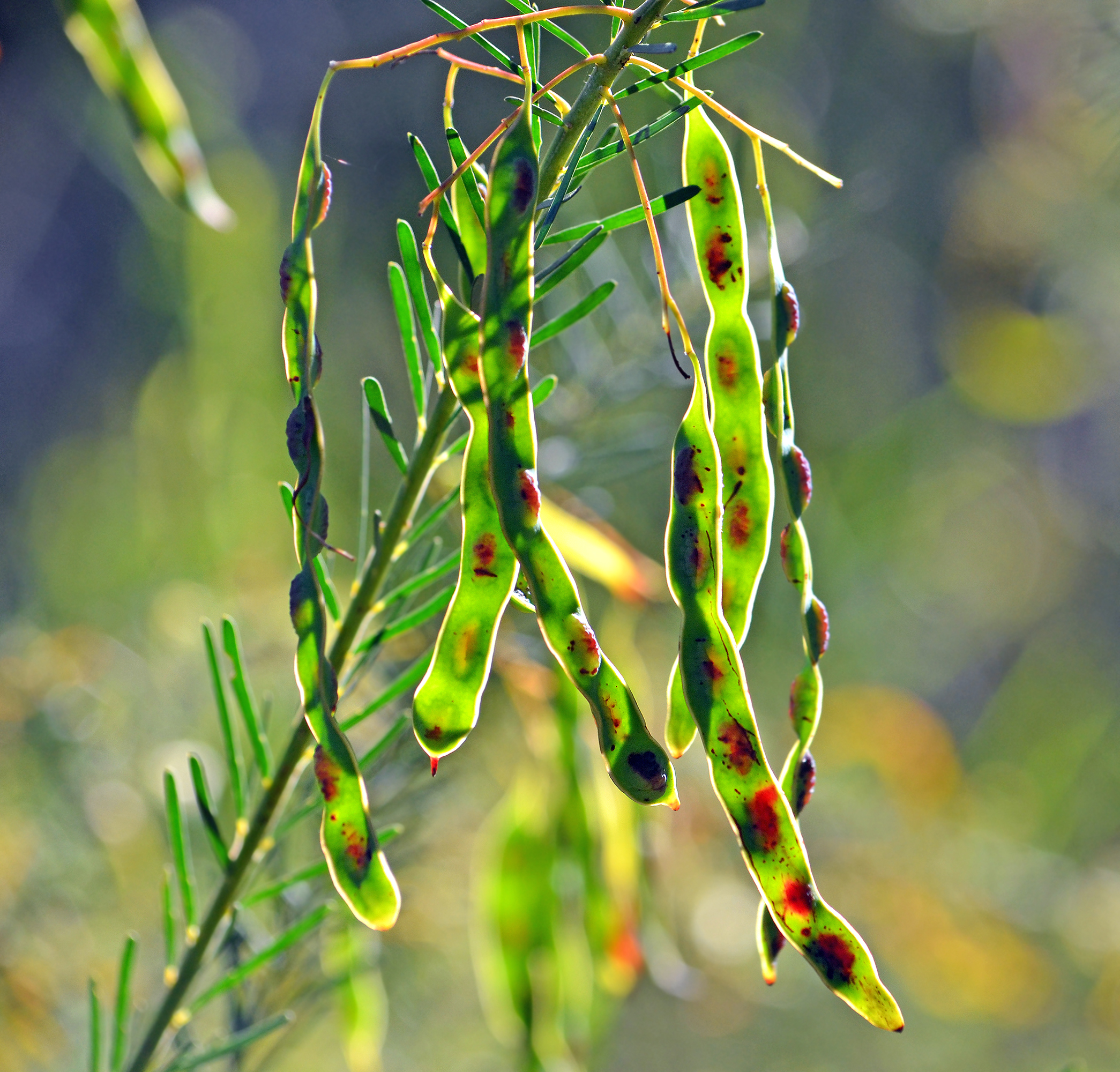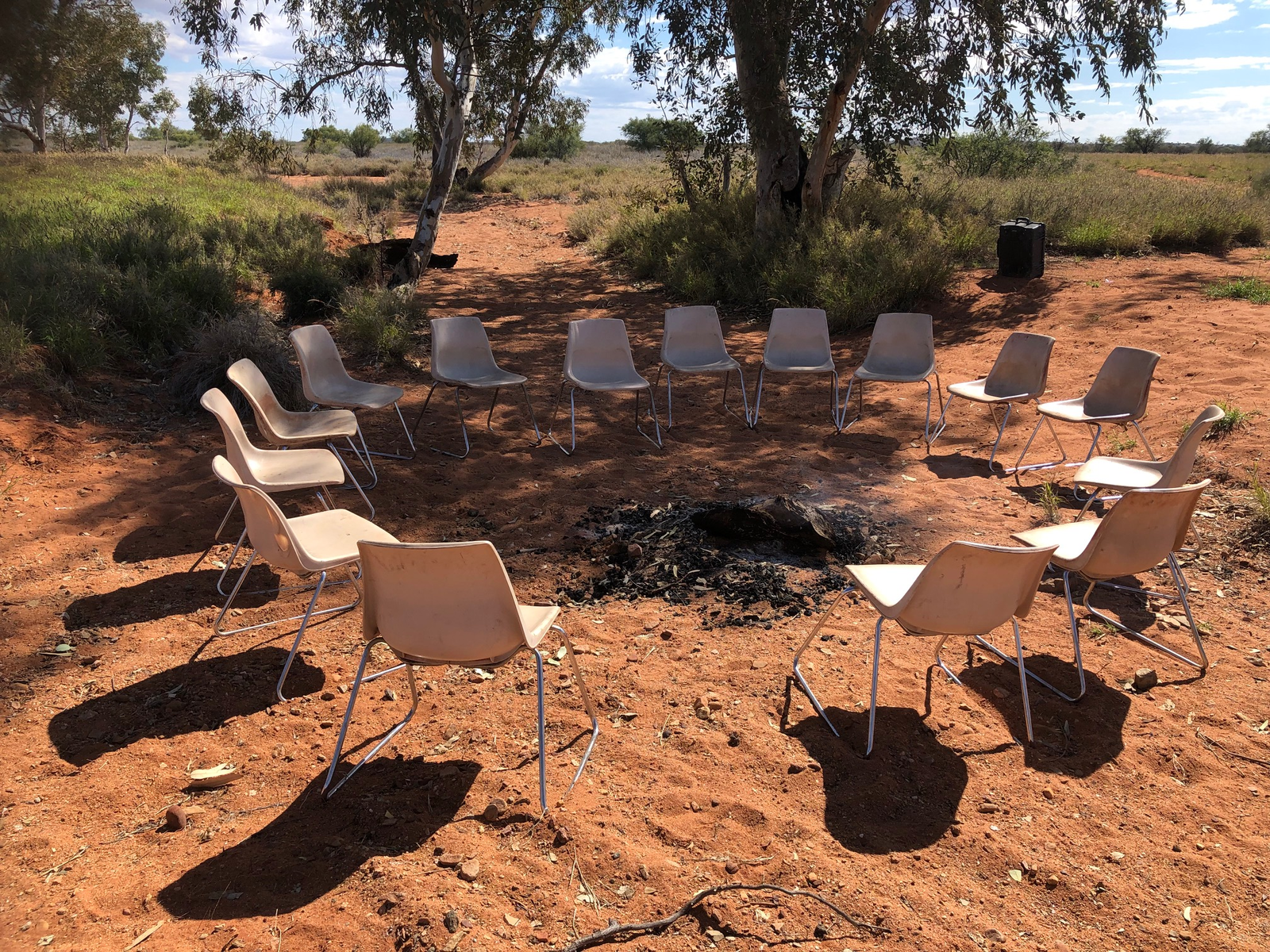Some of my most cherished memories revolve around stories shared beneath the gum trees - timeless wisdom exchanged by those whose hands were stained with the red sands of the Central deserts. Many years ago, I came across an old, grainy video featuring an elder who recounted how her grandmother would gather the plants and prepare traditional bush medicines. This historical footage served as a cornerstone for establishing the Mukurtu archive within the community.
This article is about communities seizing the opportunity to capture their narratives and preserving their stories of seeds. Through Participatory Video, First Nations people are engaging their elders and transforming seed banks into repositories of cultural memory while facilitating intergenerational knowledge transfer. The seed is the embodiment of limitless potential.
How a Camera Becomes a Campfire: The Transformative Role of Participatory Video
Participatory video (PV) is more than a method—it's a movement that brings First Nations storytelling to the forefront, especially in remote communities. When I first witnessed PV in action, it was clear that the camera had become a new kind of campfire. Around it, elders and youth gathered—not as passive subjects, but as active informants and directors of their own narratives. This shift is profound. Research shows that PV allows Indigenous communities to control their own storytelling and video production, restoring video as a truthful communication tool and a vessel for cultural heritage.
In each of our seed bank projects, we teach workshops on Participatory Video to document the journey and develop a way to for each community to tell their own stories and use these for community engagement, archival use and impact reporting. I’ve seen how PV transforms documentation into shared storytelling. For example, a young woman’s first bush tomato gathering with her grandmother isn’t just a memory—it’s a living story, captured on film and woven into the community’s collective narrative. These personal accounts connect past and future, ensuring that knowledge isn’t lost but passed on, voice by voice, frame by frame. The emotional resonance is powerful: pride, hope, and resilience shine through in every genuine on-camera moment, far surpassing any scripted message.
PV also fosters pride and visibility for communities often marginalized in mainstream media. By inviting everyone—elders, women, youth—to participate, the process becomes a celebration of identity. I remember a community elder’s words during a seed bank project:
This seed bank is not just about seeds; it’s about our future, our stories, and our culture.
That statement became a beacon for real change, echoing through every stage of the project. The video stories we created serve as both an archive and a tool for reporting. They double as powerful advocacy to attract resources and understanding from outsiders. For instance, a recent $50,000 grant was secured thanks to a PV documentary that showcased the impact of the seed bank initiative. These stories speak directly to funders, policymakers, and the broader public, offering a window into the community’s aspirations and achievements.
Community screenings, like the one held in community in June 2021, turn these videos into moments of celebration and collective action. Families, leaders, and external stakeholders come together, their pride evident as they watch their own stories unfold on screen. These events are more than just viewings—they are affirmations of cultural heritage and unity, sparking conversations about the importance of conservation and the ongoing stewardship of local biodiversity.
Ultimately, participatory video empowers remote Aboriginal communities to tell their own stories, transforming the simple act of video-making into a force for cultural preservation, advocacy, and intergenerational connection. Each genuine story fragment—each unscripted moment—grounds the project in lived truth, ensuring that the legacy of culture and conservation endures.
Gatherings Under Gum Trees: The Art (and Imperfection) of Stakeholder Engagement
When I reflect on the heart of our seed bank projects, it’s not the equipment or the funding that comes to mind first—it’s the gatherings under gum trees, the laughter echoing while collecting seeds, and the sense of belonging that grows with every shared story. Community engagement, in this context, is never a checklist. It’s an evolving, sometimes unpredictable process that thrives on genuine connection and collective purpose.
Our initial meetings are intentionally held in culturally significant places—often beneath the shade of gum trees or in dry river beds. Here, elders, youth, women, and men come together, not as stakeholders in the corporate sense, but as family and knowledge holders. These gatherings set the tone for the entire Participatory Video (PV) process. There’s no rigid agenda. Instead, the energy is more like a yarning circle than a boardroom—open, conversational, and, at times, beautifully chaotic. And there is always plenty of tea.
Workshops are designed for authentic participation with a giant roll of butcher paper and handfulls of markers. Sometimes, this means crazy drawings, dogs barking in the background, or heated debates about the best way to collect, clean and store seeds. Far from being distractions, these moments are the fabric of real community workshops. As one participant put it,
Our best stories started as arguments about how to store seeds. It takes all voices.
This approach to stakeholder engagement is deeply relational. Trust is built slowly—through patience, shared meals, and the willingness to listen, not through policy documents or formal agreements. Research shows that these inclusive, organic workshops are vital for the long-term sustainability of seed bank projects and seed storage practices. They foster consensus and reinforce community identity, ensuring that everyone feels invested in the project’s direction.
Inclusivity is more than a goal; it’s a lived reality. We structure these workshops for youth, elders, and women, aiming to give everyone a voice. Sometimes, the process reveals unexpected leaders—a quiet elder who becomes the group’s storyteller, or a young woman who, after interviewing her grandmother on camera, finds her own voice as a cultural advocate. These intergenerational knowledge sharing moments are where the real magic happens. Youth learn by doing, elders pass on traditions, and together, we create a living archive of community wisdom. Seed conservation and storytelling go hand in hand, both are crucial for adapting to climate change and ensuring cultural survival in the face of environmental challenges.
The Indigenous Land and Sea Corporation, regional media centres and NIAA have all been instrumental in supporting these efforts, providing resources that allow us to blend technical training with cultural priorities. But the true strength of our stakeholder engagement lies in its imperfection. It’s messy, unpredictable, and utterly human. And that’s exactly what makes it work.
In these gatherings, consensus isn’t forced—it emerges. Community workshops become spaces where identity is not only discussed but lived, and where the seeds of both culture and conservation are sown for generations to come.
Bush Tomatoes and Living Archives: Co-Creating Biodiversity Preservation
In remote Aboriginal communities, biodiversity preservation is not just about protecting plants—it’s about keeping culture alive. When we set out to create a seed bank, the first step is always a genuine, cross-generational conversation. Choosing which species to protect, like bush tomato and Mulla Mulla (Ptilotus spp.), isn’t a decision made in isolation. Elders, youth, and everyone in between gather, sharing stories and knowledge to guide our selection. This process ensures that our seed banks reflect both ecological value and deep cultural significance.
Seed collection is where teaching, memory-making, and fun come together. I remember watching Asha, a young woman from of the the communities we work in, collect bush tomato seeds with her grandmother. The sun was hot, and they spread the seeds on flat stones to dry, laughing and telling stories as they worked. These moments are more than practical—they’re about cultural transmission. As Asha later shared,
I can still smell the bush tomato on my hands every time I watch the video of us collecting.
Documenting these activities through Participatory Video (PV) transforms each step into a living tutorial and a time capsule. Our videos capture not just the how-to of bush tomato seed collection, but the why—preserving the stories, songs, and laughter that make these practices meaningful. Research shows that PV is a powerful tool for engaging all generations, giving everyone a voice and ensuring that knowledge is passed on authentically.
When it comes to sustainable seed storage, the conversation gets lively. Storage isn’t just science; it’s about trust. Grandmothers advocate for time-tested plastic buckets, while tech-savvy youth suggest airtight containers or even recycled packaging. Sometimes, debates over which basket is best can get heated, but these discussions are part of what makes our approach strong. We blend traditional and modern techniques, always guided by what works best for each unique environment.
Throughout, we document every step—sun-drying seeds, winnowing & cleaning them, and carefully labeling and placing them in their chosen vessels. Our videos serve as a visual reference, ensuring that future generations can learn directly from our experiences. This living archive is more than a record; it’s a bridge between past and future, tradition and innovation. As we store seeds of bush tomato, native wattle, and Cymbopogon ambiguus, we’re also storing stories, memories, and hope.
Research indicates that seed banks are vital for both biodiversity preservation and cultural heritage. By linking our seed bank activities with community storytelling and education, we ensure that our efforts are sustainable and meaningful. The interplay of tradition and innovation, moments of meaning captured on video, keeps our culture vibrant and our biodiversity protected for the long haul.
From Footage to Film: The Patchwork Craft of Collaborative Editing
Collaborative editing is where the heart of community storytelling truly comes alive. In our experience working with Participatory Video (PV) in remote Aboriginal communities, the editing process is never a solitary task. Instead, it’s a communal affair—often held at the local media centre, where the Wi-Fi might be slow but the tea is always flowing. Here, the act of piecing together video footage becomes an opportunity for connection, learning, and shared authorship.
Training in video production is ongoing and inclusive. Elders gather with youth, each bringing their own strengths to the editing table. While younger participants might be more comfortable adjusting audio levels or splicing clips, elders contribute by recalling stories, offering context, and ensuring that the narrative remains true to community memory. This intergenerational exchange is central to our approach; it’s not just about technical skills, but about weaving together voices and perspectives that reflect the collective experience.
The final film is rarely polished in the conventional sense—and that’s intentional. We celebrate the raw, unscripted moments: Tanique’s children scrambling after seeds, an elder’s off-key singing drifting over baskets of bush tomato seeds, laughter echoing in the background. These moments are the soul of community storytelling, capturing the authenticity and vibrancy of daily life. As Tanique, a community participant, once shared:
Seeing my kids on the big screen collecting seeds, that’s family history—captured.
Through collaborative editing, participants gain more than just video production training—they develop a sense of ownership and pride. The process ensures that the video reflects a collective memory, not a single vision. Research shows that this approach not only strengthens community bonds but also serves as a powerful tool for advocacy through video. When the finished film is shared, it’s not just a record; it’s a living testament to the community’s resilience and aspirations.
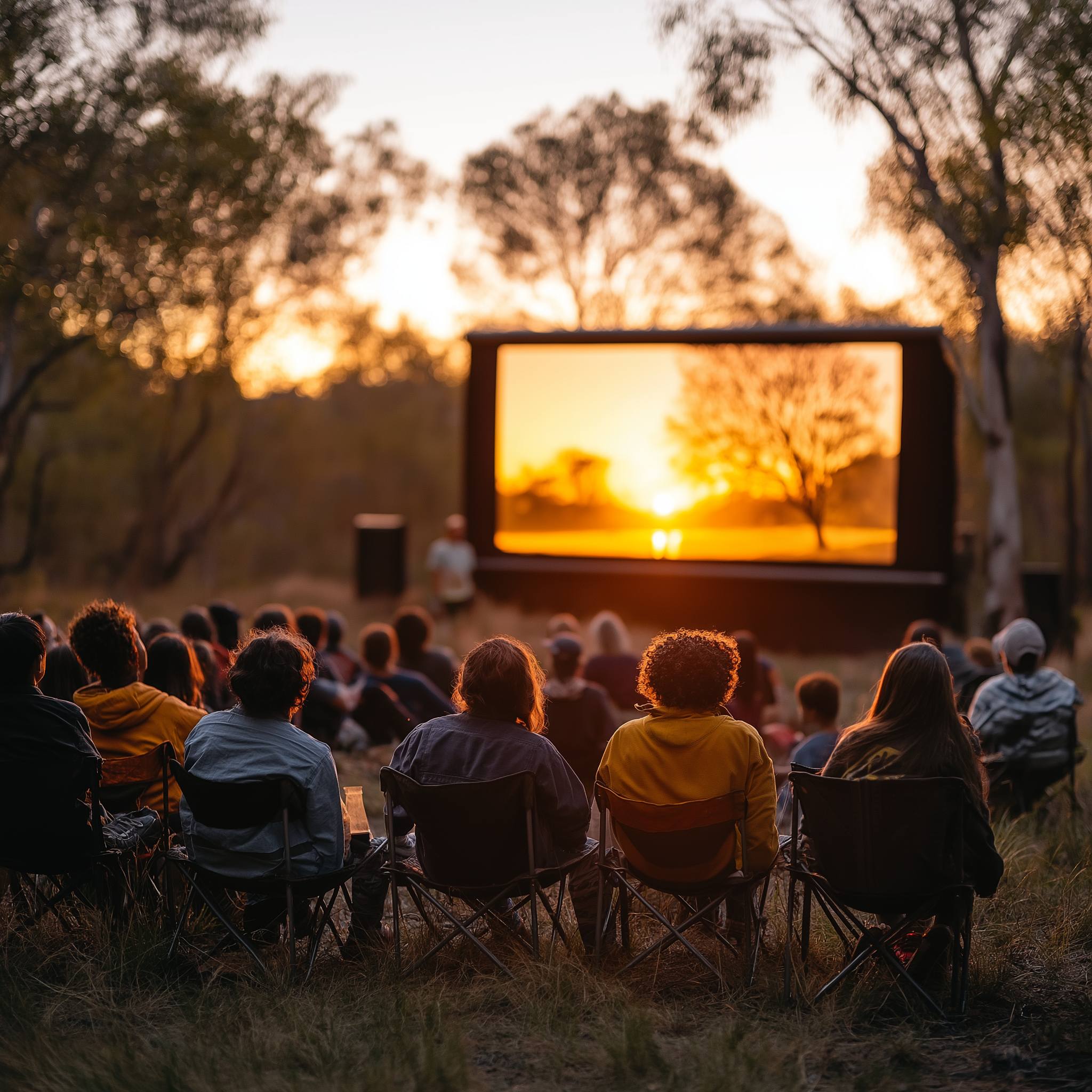
Community screenings are a highlight of the PV journey. These events are more celebration than premiere. Families, elders, youth, and even outsiders gather, drawn by the promise of food, laughter, and pride. The screenings become milestones—moments that reinforce collective identity and spark dialogue about the importance of biodiversity preservation and cultural heritage. I get tears in my eyes when I talk about these moments of togetherness and hope - for me, these memories are treasures that last a lifetime.
Screenings also have a strategic impact. By showcasing the community’s work, they open doors to advocacy and support. Studies indicate that advocacy through video can help secure funding and raise awareness for vital projects like seed banks. When stakeholders witness the genuine stories and community effort on screen, they are more likely to offer resources and partnership, ensuring the sustainability of both cultural and conservation initiatives.
In essence, collaborative editing transforms video production into an act of shared authorship. Each screening is a celebration of community storytelling, impact, advocacy, and the enduring power of collective memory.
Planting for Tomorrow: Partnerships, Persistence, and Passing it On
Looking ahead, the future of sustainable seed banks in remote Aboriginal communities rests on more than just careful collection and preservation. It thrives on the strength of our partnerships, the persistence of our efforts, and our commitment to passing knowledge from one generation to the next. Participatory Video (PV) has shown itself to be a powerful catalyst in this journey, not only documenting our progress but also amplifying our collective voice in ways that attract support and inspire action.
From the outset, building strong ties with universities, NGOs, and government programs like the Land and Sea Rangers has been essential. These partnerships bring expertise, visibility, and, crucially, financial support. I’ve seen firsthand how sharing our PV stories with these partners opens doors. In fact, a recent $50,000 grant was secured after we showcased our community’s achievements through video. This wasn’t just luck; it was the result of years of community engagement and advocacy through video, demonstrating real impact and potential for growth.
Annual review meetings have become a cornerstone of our approach. By gathering the community to watch and discuss the latest PV footage, we keep our seed bank initiative alive and adaptive. These reviews are more than just a look back—they are a chance to reflect, celebrate, and plan for the future. Feedback from elders, youth, and partners shapes our next steps, ensuring the project remains relevant and resilient. Research shows that this kind of ongoing, inclusive engagement is vital for long-term sustainability.
There are a variety of governmental and NGO's which offer grants that are key for financial sustainability. But beyond funding, these collaborations help us access research, training, and broader networks. Each new partnership is like planting a seed—sometimes the results are immediate, other times they take root slowly, but over time, the garden grows. As one project coordinator put it,
Partnerships grow like seeds—you start with one, and suddenly there’s a whole garden.
Ultimately, our goal is to turn every seed bank project into a beacon for intergenerational knowledge sharing, local leadership, and biodiversity advocacy. PV doesn’t just record these stories; it helps us share them with the right people and organizations that can assist, inviting others to join us in protecting both our heritage and our environment. The process is ongoing—there’s always more to learn, more to share, and more to preserve. By staying persistent, nurturing partnerships, and passing on what we know, we ensure that our efforts today will continue to bear fruit for generations to come. Saving and sharing seeds is not just an agricultural practice, but an ethical and ecological duty to ensure future food security and biodiversity.
"Preserving ancient culture and saving seed is the highest moral duty on Earth"
Dr.Vandana Shiva
We will share more about the Mukurtu CMS Archive system in a future post.
